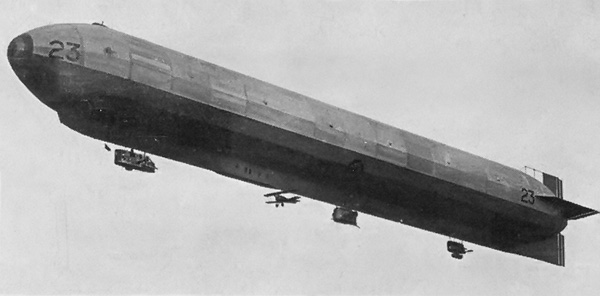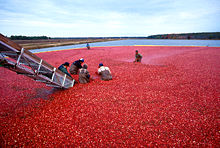The thread of learning something new every day
-
on this day in 1959, Chinese gooseberry becomes kiwifruit
The prominent produce company Turners and Growers announced that it would from now on export Chinese gooseberries as ‘kiwifruit’. Introduced to this country in 1904, kiwifruit are now cultivated worldwide, with New Zealand-grown fruit marketed as ‘Zespri’.
Despite the name, kiwifruit are not native to New Zealand. Seeds were brought to New Zealand in 1904 by Mary Isabel Fraser, the principal of Wanganui Girls’ College, who had been visiting mission schools in China. They were planted in 1906 by a Whanganui nurseryman, Alexander Allison, and the vines first fruited in 1910. People thought the fruit had a gooseberry flavour and began to call it the Chinese gooseberry. It is not related to the Grossulariaceae family to which gooseberries belong.
New Zealand began exporting the fruit to the US in the 1950s. This was the height of the Cold War and the term Chinese gooseberry was a marketing nightmare for Turners and Growers. Their first idea, ‘melonettes’, was equally unpopular with US importers because melons and berries were subject to high import tariffs. In June 1959, Jack Turner suggested the name kiwifruit during a Turners and Growers management meeting in Auckland. His idea was adopted and this later became the industry-wide name.
The Bay of Plenty town of Te Puke, where New Zealand’s kiwifruit industry began, markets itself as the ‘Kiwifruit Capital of the World’. In 2017 China was the world’s leading producer of kiwifruit, followed by Italy, New Zealand, Iran and Chile. Most New Zealand kiwifruit is now marketed under the brand-name Zespri, partly as a way to distinguish ‘Kiwi’ kiwifruit from the produce of other countries.
-
@taniwharugby I did not realise the name change was so long ago. In the sixties they were still being sold locally as Chinese Gooseberries and I'm certain I remember a news article about them changing their name to kiwifruit. Maybe Kiwifruit was initially only for the export market.
-
@dogmeat Yeah. I worked in a greengrocers as a kid and they were Chinese gooseberries then. I was not alive in 1959, this was early eighties. They must have done it for export first, then it caught on here.
Completely worthless knowledge that I will no doubt remember instead of something that I actually need to know. Thanks @taniwharugby
-
@taniwharugby said in The thread of learning something new every day:
@dogmeat I recall as a child in the early 80s people still sometimes referred to it as a Chinese Gooseberry, so yeah think it was more the exports it became exclusively a Kiwifruit
Snap.
-
@Snowy said in The thread of learning something new every day:
@dogmeat Yeah. I worked in a greengrocers as a kid and they were Chinese gooseberries then. I was not alive in 1959, this was early eighties. They must have done it for export first, then it caught on here.
Completely worthless knowledge that I will no doubt remember instead of something that I actually need to know. Thanks @taniwharugby
they were definitely kiwifruit in the mid-80s. Te Puke being just down the road, guess what we did for school projects in primary school?
-
@dogmeat said in The thread of learning something new every day:
@taniwharugby I did not realise the name change was so long ago. In the sixties they were still being sold locally as Chinese Gooseberries and I'm certain I remember a news article about them changing their name to kiwifruit. Maybe Kiwifruit was initially only for the export market.
yeah they were called Chinese Gooseberries in NZ well into the 80s
EDIT: Echo>echo>echo....
-
@mariner4life said in The thread of learning something new every day:
they were definitely kiwifruit in the mid-80s. Te Puke being just down the road, guess what we did for school projects in primary school?
Not where I'm from, but you were in the Kiwifruit capital of the world so not surprising.
I hate to think what your school projects were down there...possibly just picking hairy balls?
-
@Snowy said in The thread of learning something new every day:
@mariner4life said in The thread of learning something new every day:
they were definitely kiwifruit in the mid-80s. Te Puke being just down the road, guess what we did for school projects in primary school?
Not where I'm from, but you were in the Kiwifruit capital of the world so not surprising.
I hate to think what your school projects were down there...possibly just picking hairy balls?
no, that was just at Tauranga Boys
-
-
@Snowy said in The thread of learning something new every day:
@dogmeat said in The thread of learning something new every day:
@Snowy whereas yours would have been leatherwork I presume?
Unfortunately, tanning and sewing weren't in the curriculum.
Some skills can be learned later in life though.
ah youtube
-
I learnt that it wasn't just the Germans who used Zeppelins in WW1, the British and French amongst other countries did as well. They also experimented with using them as aircraft carriers, where they'd have planes strapped to the bottom to fly off ... I don't think they ever used them in action though.
I always assumed only the Germans used Zeppelins.
Edit - found a pic on wiki.

-
@mariner4life said in The thread of learning something new every day:
@Snowy said in The thread of learning something new every day:
@dogmeat said in The thread of learning something new every day:
@Snowy whereas yours would have been leatherwork I presume?
Unfortunately, tanning and sewing weren't in the curriculum.
Some skills can be learned later in life though.
ah youtube
Practice mostly. Youtube get all precious about some things.
-
@Nepia said in The thread of learning something new every day:
I learnt that it wasn't just the Germans who used Zeppelins in WW1, the British and French amongst other countries did as well. They also experimented with using them as aircraft carriers, where they'd have planes strapped to the bottom to fly off ... I don't think they ever used them in action though.
I always assumed only the Germans used Zeppelins.
Called airships, blimps or dirigibles, the only difference was the name (and some construction) but they were in many countries. Gasbags full of hot air are all around you...


The USS Los Angeles airship ended up nearly vertical after its tail rose out of control while moored at the Naval Air Station Lakehurst, New Jersey in 1927.Later on but that is quite some parking.
Interesting comment:
"They did more damage keeping people awake than actual physical damage," says Jeffery S. Underwood, a historian at the United States Air Force Museum at Wright-Patterson Air Force Base in Ohio. Zeppelins "scared the living daylights" out of the British. The Germans believed that bombing civilians would bring panic in the cities, leading the British government to collapse—or at least pull out of the fighting and leave the French on their own on the Western Front.A precursor to WW2.
Airships have a really interesting history and have been looked at recently for heavy lifting.

 Cranberry - Wikipedia
Cranberry - Wikipedia

